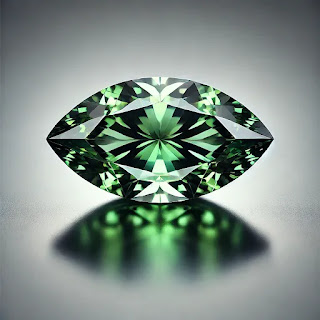I've recently told you of my first gemcutting experiences, but i didn't go into much detail about the process, besides showing you the feedback I got from a first cut. Let us compensate for that lack today, and also show you some more advanced gems I was able to carve.
Gemcutting 101
1. What do I need?
Gemcutting is the art of taking gems and cutting, grinding, polishing and (perhaps) setting them into metal pieces of jewellery.
As for materials, what you need are gems. These can either be bought from some dealer, like Jeromee, in Slippery Hollow, or mined from the earth in Copperhead. In whichever way you get them, rough, uncut gems come into three different types, which depend on size:
shard (huge)
fragment (large)
chip (small)
Besides the gems, you will need some tools to work them: you'll need a set of gemcutting tools, which you can acquire from Jeromee, and a polishing cloth (if you bought one for goldsmithing, it will do the job).
l cloth
This soft cloth can be used to polish jewellery and gemstones to a lustrous shine, removing every last vestige of roughness.
It is in excellent condition.
>
l tools
This soft canvas roll contains the portable tools needed for the craft of gemcutting. Leather loops hold a small hammer, a diamond-tipped chisel, several different sizes of tapered pliers and a notching tool when they are not in use. There is also a special pocket that would be perfect for a polishing cloth.
It is in excellent condition.
It is open.
The jewellery crafting room is considerably more functional and practical than the showroom next door. Benches line the walls, and each bench is equipped with various tools.
A polished wooden counter is placed along the north wall, a goldsmith's workbench is against the west wall, and a gem tumbler and gem grinding wheel are lined up on a bench against the south wall.
There is one obvious exit: east.
Jeromee is standing behind the polished wooden counter.
A large sign is pasted on the counter.
l tumbler
This device features a hollow steel barrel the inside of which has been coated with diamond dust. A sturdy wooden handle attaches to the drum, allowing it to be turned at speed, tumbling any gems placed inside it.
It is in excellent condition.
It is open.
l grinder
This device features a steel disc which, through means of a pedal, can be turned at high speeds. It is coated with diamond dust to enable even the hardest of gems to be ground upon its surface. It has several vices of different sizes to allow gems of all sizes to be held firmly in place while being ground.
3. How does it go?
So you've got your gems and tools and are at the gemcutting smithy. First thing, you have to decide what cut you are going to do with the gem, with two general paths:
Tumbling: If the gem is low quality and/or you lack skills, the best choice is to tumble. This means you put the gem in the tumbler shown above and turn it around a few times (careful not to make it too many, or your gems will turn to dust). Tumbling roughly gives them the appropriate shape. You then proceed to cut the gem with one of the three cabochon cuts: Cabochon, High Cabochon, or Lentil-shaped Cabochon. Once this is complete, you grind and polish the gem, and you've finished.
Faceted Cuts: if you want a more valuable, but also a more difficult, gem, you avoid the tumbling and go directly to the more complex, faceted cuts. Again, after you've completed the cutting satisfactorily, you still have to grind and polish the gem (and to set it in jewellery, if that is the desired outcome). There are many types of faceted cuts, which become more difficult to do the more facets they produce:
Intermediate cuts
Baguette (20 facets)
Tapered Baguette (20 facets)
Octagonal Step (25 facets)
Advanced cuts
Trillion (44 facets)
Pear-shaped (54 facets)
Cushion (54 facets)
More Advanced cuts
Rose (57 facets)
Marquise (57 facets)
Expert cuts
Brilliant (57 facets)
Heart-shaped (59 facets)
Oval-shaped (69 facets)
Teardrop (71 facets)
Princess (76 facets)
Once the gem is ready, you can sell them! The prices they will fetch will depend on a couple of elements, besides the skills you've employed in getting them to a cut and polished state: the first is the gem material: gems fall into one of 8 different classes of increasing quality and value. The second is gem quality: each gem can be of either low, average, high or very high grade. These qualities also constrain what types of cuts can be made on the gems to begin with. You can find information of which gem belongs to which class here.
In my first post I included some very basic gems with the easiest of cuts. Some slightly more complex ones I've succeed in recently are the following:
a tiny rose cut variegated green tourmaline:
This tiny tourmaline has been cut to a round shape when viewed from the top. Light glints off the gem's fifty-seven perfect facets.












No hay comentarios:
Publicar un comentario